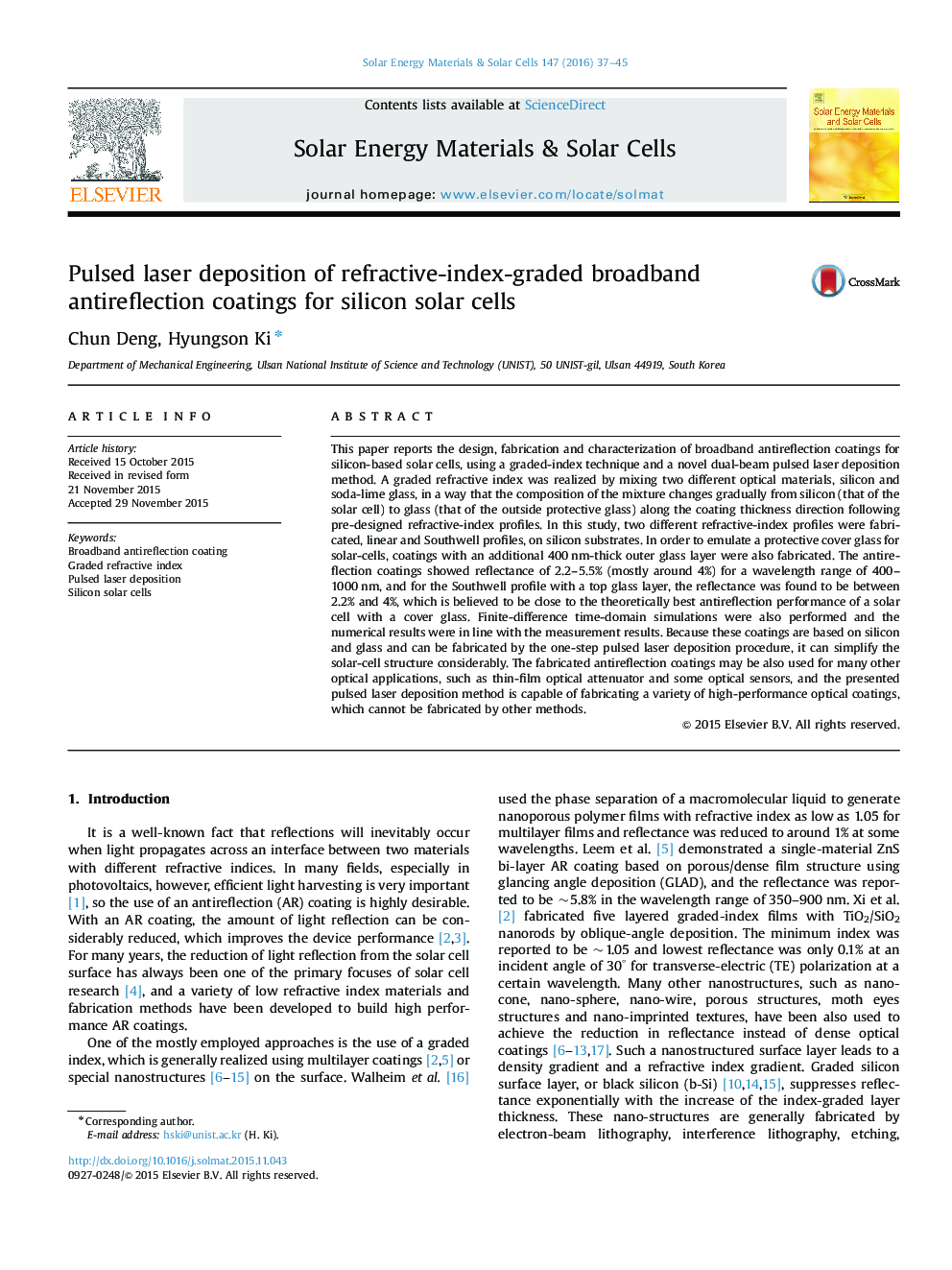| Article ID | Journal | Published Year | Pages | File Type |
|---|---|---|---|---|
| 6534804 | Solar Energy Materials and Solar Cells | 2016 | 9 Pages |
Abstract
This paper reports the design, fabrication and characterization of broadband antireflection coatings for silicon-based solar cells, using a graded-index technique and a novel dual-beam pulsed laser deposition method. A graded refractive index was realized by mixing two different optical materials, silicon and soda-lime glass, in a way that the composition of the mixture changes gradually from silicon (that of the solar cell) to glass (that of the outside protective glass) along the coating thickness direction following pre-designed refractive-index profiles. In this study, two different refractive-index profiles were fabricated, linear and Southwell profiles, on silicon substrates. In order to emulate a protective cover glass for solar-cells, coatings with an additional 400Â nm-thick outer glass layer were also fabricated. The antireflection coatings showed reflectance of 2.2-5.5% (mostly around 4%) for a wavelength range of 400-1000Â nm, and for the Southwell profile with a top glass layer, the reflectance was found to be between 2.2% and 4%, which is believed to be close to the theoretically best antireflection performance of a solar cell with a cover glass. Finite-difference time-domain simulations were also performed and the numerical results were in line with the measurement results. Because these coatings are based on silicon and glass and can be fabricated by the one-step pulsed laser deposition procedure, it can simplify the solar-cell structure considerably. The fabricated antireflection coatings may be also used for many other optical applications, such as thin-film optical attenuator and some optical sensors, and the presented pulsed laser deposition method is capable of fabricating a variety of high-performance optical coatings, which cannot be fabricated by other methods.
Keywords
Related Topics
Physical Sciences and Engineering
Chemical Engineering
Catalysis
Authors
Chun Deng, Hyungson Ki,
